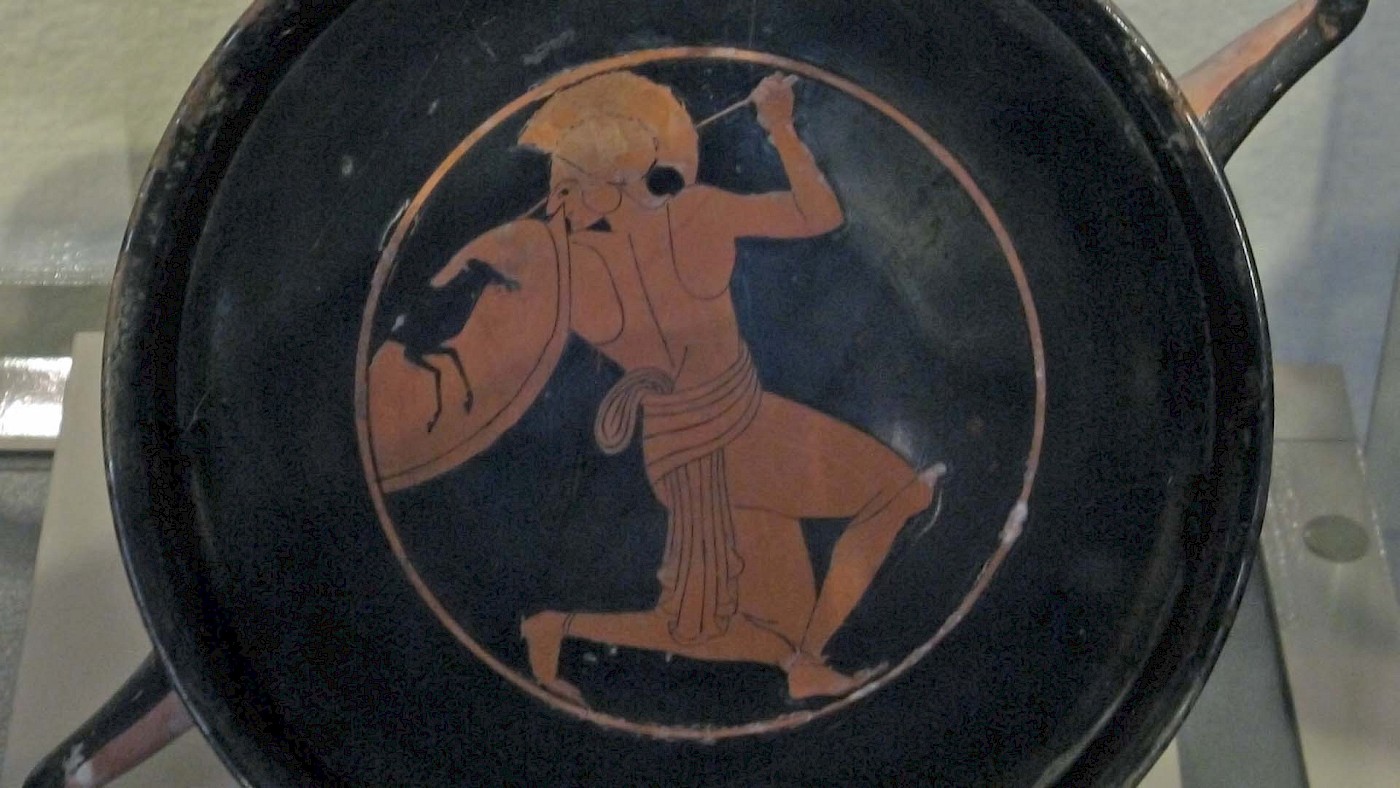The Allard Pierson Museum in Amsterdam has a good collection of ancient Greek pottery, which includes the red-figure kylix (cup) used as this article’s featured image. It dates to ca. 510 BC and has been attributed to the Agora Charias Painter.
The figure is that of a young man with an Argive shield and a thrusting spear. He is further equipped with a helmet (apparently of Chalcidian type, since there appears to be an indication of a nose guard) and greaves, both undoubtedly made of bronze. If not for the simple piece of cloth wrapped around his waste he would be naked.
When I first saw this cup I figured that it showed the warrior engaged in a war-dance, the so-called “Pyrrhic”. But the description of the cup in the museum described the warrior as “wounded”. It’s almost impossible to see in the picture at the top, but if you look carefully in the area underneath the warrior’s left arm, you’ll see blood spraying out of a wound that he must have suffered on his chest. Here’s an enchanced close-up of the area, taken from another angle:

Once I realized that this warrior was wounded, and bleeding profusely, it called to mind the ancient Greek concept of the beautiful death. Perhaps nowhere is this idea better expressed than in a passage in the Iliad where Priam, the king of Troy, idolizes youth and the brave death of a young and handsome warrior, while at the same time lamenting the death of an older man.
In the translation of Richmond Lattimore, the passage reads (Il. 22.71–76):
For a young man all is decorous when he is cut down in battle and torn with the sharp bronze, and lies there dead, and though dead still all that shows about him is beautiful; but when an old man is dead and down, and the dogs mutilate the grey head and the grey beard and the parts that are secret, this, for all sad mortality, is the sight most pitiful.
The museum doesn’t make clear where this cup was found, but considering that it is intact, it must have been recovered from a grave. Perhaps the deceased was himself a young man cut down in battle. Or maybe whoever put this cup in the grave had thoughts along similar lines to Priam, either extolling the virtues of a beautiful death or deploring the passing of the aged. If the cup was ever used in life, it almost certainly would have ellicited such thoughts from whomever held it.
